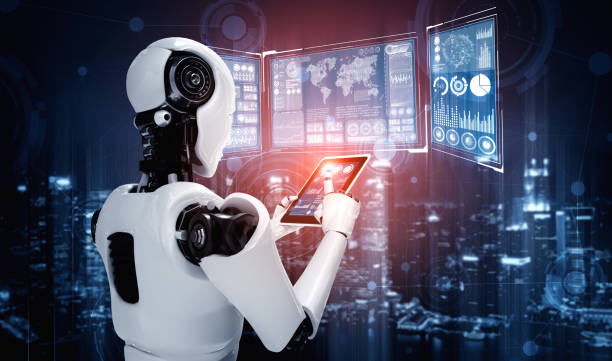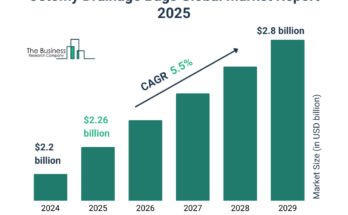The Artificial Intelligence In Life Sciences Global Market Report 2024 by The Business Research Company provides market overview across 60+ geographies in the seven regions – Asia-Pacific, Western Europe, Eastern Europe, North America, South America, the Middle East, and Africa, encompassing 27 major global industries. The report presents a comprehensive analysis over a ten-year historic period (2010-2021) and extends its insights into a ten-year forecast period (2023-2033).
Learn More On The Artificial Intelligence In Life Sciences Market:
https://www.thebusinessresearchcompany.com/report/artificial-intelligence-in-life-sciences-global-market-report
According to The Business Research Company’s Artificial Intelligence In Life Sciences Global Market Report 2024, The artificial intelligence in life sciences market size has grown exponentially in recent years. It will grow from $2.35 billion in 2023 to $2.92 billion in 2024 at a compound annual growth rate (CAGR) of 24.2%. The growth in the historic period can be attributed to increasing number of clinical trials, increasing adoption of ai in the domain of r&d, high emphasis on the development of precision medicine and personalized drugs.
The artificial intelligence in life sciences market size is expected to see exponential growth in the next few years. It will grow to $6.82 billion in 2028 at a compound annual growth rate (CAGR) of 23.6%. The growth in the forecast period can be attributed to the increasing interest in real-time remote patient monitoring (rpm) systems, increasing demand for ai in drug discovery, the increasing adoption of ai in medical imaging analysis. Major trends in the forecast period include strategic partnership, product innovations, technological advacements, investments, research and developments.
The increasing interest in real-time remote patient monitoring (RPM) systems is expected to propel the growth of artificial intelligence in the life sciences market going forward. A remote patient monitoring system is a technology-driven healthcare solution designed to monitor patients’ health outside of traditional healthcare settings. AI in life sciences contributes significantly to remote patient monitoring by providing continuous, personalized, and data-driven insights that enable proactive healthcare management. For instance, in August 2023, according to a survey conducted by Vivalink, a US-based digital healthcare company, clinicians’ use of remote patient monitoring (RPM) grew by 20% in 2021 to 81% in 2022, increasing by 305%. Therefore, the increasing interest in real-time remote patient monitoring (RPM) systems is driving the growth of artificial intelligence in the life sciences market.
Get A Free Sample Of The Report (Includes Graphs And Tables):
https://www.thebusinessresearchcompany.com/sample.aspx?id=13587&type=smp
The artificial intelligence in life sciences market covered in this report is segmented –
1) By Offering: Software, Hardware, Services
2) By Deployment: On-Premises, Cloud-Based
3) By Application: Drug Discovery, Medical Diagnosis, Biotechnology, Clinical Trails, Precision and Personalized Medicine, Patient Monitoring
Major companies operating in the artificial intelligence in the life sciences market are focusing on innovative products with technological advancements, such as drug discovery software, to sustain their position in the market. Drug discovery software refers to a category of computer programs and applications designed to assist pharmaceutical and biotechnology researchers in the process of discovering new drugs. For instance, in December 2023, Merck, a Germany-based science and technology company, unveiled AIDDISON, a groundbreaking drug discovery software. As the first-ever of its kind, it connects virtual molecule design with real-world manufacturability, using generative AI, machine learning, and computer-aided drug design. AIDDISON efficiently identifies drug candidates from vast possibilities, considering crucial properties like non-toxicity and solubility. Its ability to bridge the gap between virtual molecule design and real-world manufacturability is a notable application of artificial intelligence in the life sciences sector.
The artificial intelligence in life sciences market report table of contents includes:
1. Executive Summary
- Artificial Intelligence In Life Sciences Market Characteristics
- Artificial Intelligence In Life Sciences Market Trends And Strategies
- Artificial Intelligence In Life Sciences Market – Macro Economic Scenario
- Global Artificial Intelligence In Life Sciences Market Size and Growth
…..
- Global Artificial Intelligence In Life Sciences Market Competitive Benchmarking
- Global Artificial Intelligence In Life Sciences Market Competitive Dashboard
- Key Mergers And Acquisitions In The Artificial Intelligence In Life Sciences Market
- Artificial Intelligence In Life Sciences Market Future Outlook and Potential Analysis
- Appendix
Related Reports
https://topprnews.com/spa-market-growth/
https://topprnews.com/volumetric-video-market/
https://topprnews.com/special-steel-market-growth/
https://goodprnews.com/spa-market-size/
https://goodprnews.com/specialty-electricals-market/
https://goodprnews.com/special-steel-market-growth/
Contact Us:
The Business Research Company
Europe: +44 207 1930 708
Asia: +91 88972 63534
Americas: +1 315 623 0293
Email: [email protected]
Follow Us On:
LinkedIn: https://in.linkedin.com/company/the-business-research-company
Twitter: https://twitter.com/tbrc_info
Facebook: https://www.facebook.com/TheBusinessResearchCompany
YouTube: https://www.youtube.com/channel/UC24_fI0rV8cR5DxlCpgmyFQ
Blog: https://blog.tbrc.info/
Healthcare Blog: https://healthcareresearchreports.com/
Global Market Model: https://www.thebusinessresearchcompany.com/global-market-model




